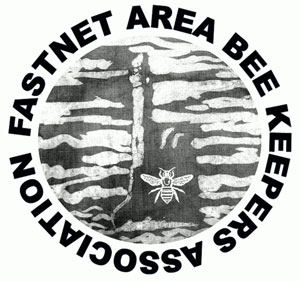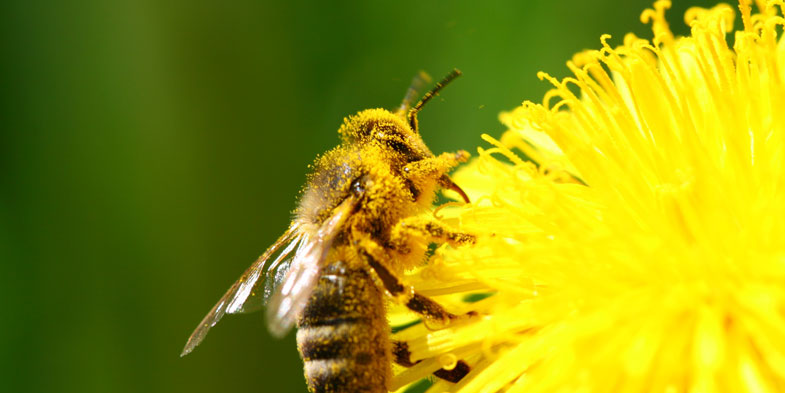Hello Beekepers!
Hello all, and hoping you and your bees are fit and healthy. Welcome to all of our new members – we’re delighted to have you with us and we wish you many years of excellent beekeeping ahead of you!
I saw bees on the dandelion this morning. Why, oh why, do people dig up this little plant!?
The leaves are used to aid digestion and have antioxidant properties. Herbalists use the root to detoxify the liver and gallbladder and use the leaves to help kidney function. For the trivial pursuit enthusiasts, the dandelion is part of a large genus of flowering plants named Taraxacum and is part of the Asteraceae family. I leave it to grow wherever it decides and its beauty and goodness for the bees is fantastic. “Dandelions are a superfood for Bees” and letting it grow MUST NOT be seen as a sign of neglect or laziness, said Dr Fitzpatrick, senior ecologist at the National Biodiversity Data Centre in Waterford. Dandelion is rich in pollen and nectar and is actually very good for your lawn. Their wide-spreading roots loosen hard-packed soil and aerate the earth and help lower erosion.
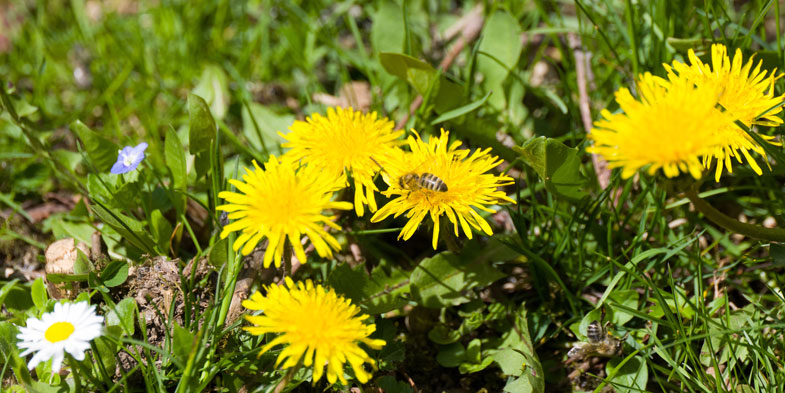
What’s Going On in the Hive
We hope that brood rearing is starting and therefore:
- The pollen need is higher. Think of this as essential protein for the brood and bees. Every fibre of their being depends on this.
- Water needs are higher. The girls need this to dissolve crystallised stores for consumption.
- The ratio of adult bees can be lower at this time of year because many of the winter bees are dying off naturally and so it is harder for the remaining bees to maintain hive temperature. All the more reason for not opening your hives until the weather is much better and temperatures are up.
However, you can still ‘nose’ around the apiary. Observe the entrances. It’s so good to see pollen going in being carried in the pollen baskets located on the foragers hind legs. If you suspect that the hive is dead and have seen no activity for some time, You could quickly open the hive just to be sure and then seal the entrance. This avoids bees from other colonies robbing from this defenceless hive. This hive may have been diseased. Maybe you spotted unusual cappings and don’t forget the matchstick rope test for American Foul Brood (AFB). You can always send samples to:
Dr. Mary Coffey,
Bee Diagnostic Service,
Plant Health Laboratory,
Backweston,
Celbridge,
Co. Kildare
W23 X3PH
Be wise, send samples of bees and comb for testing twice yearly.
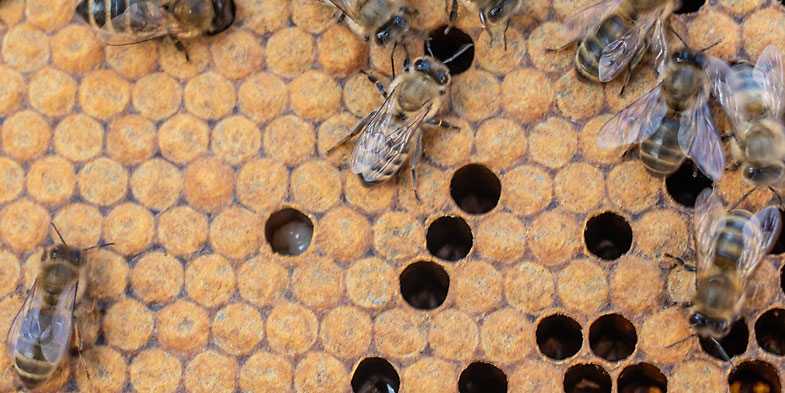
Colony Losses
Colony losses can be high in February and March.
Starvation remains a serious cause. Just ensure that you continue hefting your hives and, if they feel light, give some fondant. This time of year generally I give fondant with a pollen substitute added. This can be bought from most of the beekeeping suppliers. It is still too early to feed syrup.
A queen might have failed over the winter for a number of reasons.
- Maybe she was injured or damaged
- Maybe she was not mated correctly, etc.
All of the aforementioned can come under the heading “Winter Losses”.
For the beginner this can be devastating but improved practice and knowledge can and will lower the losses. I always prepare myself for winter losses and some years am pleasantly surprised. It’s part and parcel of this craft and all the more reason for having more than 1 or 2 hives and continually developing your knowledge.
Preparing for the Season
You should be preparing the supers now. For those of you who have drawn comb from last year – Yippee! Check them and make sure the dreaded wax moth didn’t do too much damage or the mouse for that same reason. For the newbies – you can make up super frames, but don’t put the foundation in yet. Leave this to nearer the time you’ll be putting it on the hive. Bees much prefer fresh wax with that beautiful scent and pliability.
Check your equipment!
- Hive tool
- Smoker
- Bee Suit
- Gloves
Ensure all are fit for purpose and clean. You’ll also need to have:
- A queen marking pen
- A queen marking cage
- Small sharp scissors (for wing clipping)
The marking colour for this year is yellow. This makes it easy to be able to identify the age of your queen. Maybe with one or two hives this isn’t necessary, but I’ve always colour marked accordingly. A good mnemonic to remember the standardised marking colours is: Will You Rear Good Bees
| White | 2021 |
| Yellow | 2022 |
| Red | 2023 |
| Green | 2024 |
| Blue | 2025 |
All this equipment will be used when you’re checking for the queen and none of these are expensive. Always remember, view everything you buy as an investment and once you mind your equipment you should have the same for years to come. Some of my new queens have yet to be marked. I’ll go through queen marking in next month’s newsletter. Some beekeepers clip their queens and I’ll write on that too.
I’m sure that we’re all looking forward to the arrival of the good weather, the rising temperatures and the longer daylight hours when we’ll be able to open the hives without fear of damaging or harming the colony.
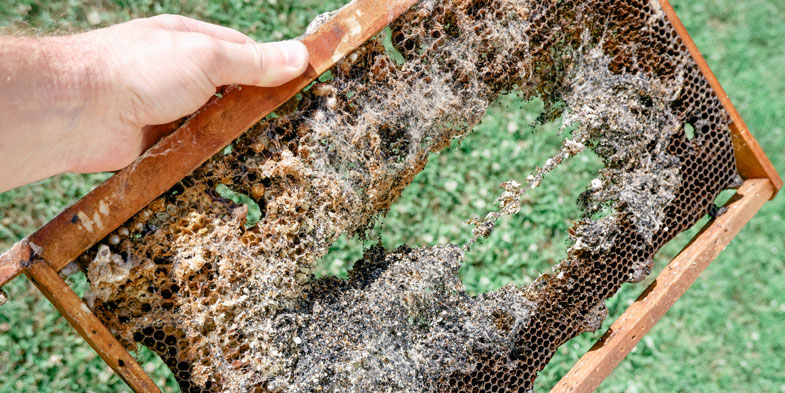
Recipe – Sesame Feta with Lime Honey Syrup
Thanks to Elizabeth Savage for sending us this delicious recipe to try!
Ingredients
2 blocks of feta (360g) cut into 4 triangles (8 in total)
35g rice or plain flour
1 large egg, well-beaten
100g mixed black & white sesame seeds lightly toasted
2 tbsp olive oil
½ tbsp. lemon thyme
Syrup
120g runny honey
3 lemons (1 juiced to get 1 tbsp and the 2 left whole)
- Line a shallow baking dish (about 30cm x 20cm) with baking parchment
- Pat dry the feta pieces, then dip each piece in the flour, gently shaking off the excess. Coat in the egg, followed by the sesame seeds, making sure the feta pieces are completely coated.
- Transfer each piece to your prepared dish and refrigerate for at least 30 minutes or longer if time allows.
- Preheat the oven to 220ºC. Drizzle the coated feta pieces with the oil and bake from cold, for 18 minutes, very gently flipping the pieces over halfway, or until golden and warmed through.
- While the feta is baking, put the honey in a saucepan on a medium-high heat. Once it starts to bubble, turn the heat to medium and cook, stirring occasionally, until it turns a deep amber caramel, about 6-7 minutes. Take off the heat and stir in the lemon juice. Set aside to cool for 5 minutes.
- Use a small, sharp knife to peel and segment the remaining two lemons and stir the segments into the cooled honey mixture.
- When ready, pour the lemon syrup directly over the feta in the baking dish, sprinkle with the thyme and serve at once, straight from the dish.
Coming Up
Our next lecture is on bee castes and full of practical information on colony management. Your attendance is always appreciated and you should gain so much information, whether you’re a proficient beekeeper or a beginner. I really would not miss it.
We’re also starting our 2022 beginners’ course next week and for those of you who completed their course last year, you are welcome to join us again this year. Many beginner beekeepers find this helpful.
We look forward to meeting you all in person in Skibbereen for our April meeting and this will give us the chance to meet the attendant Queens, Drones and Workers — otherwise known as members! One of FIBKA past presidents, a certified lecturer and proficient beekeeper with years of experience will be the speaker. Until our next zoom meeting on March 16th, please take care.
Mairead Love & the team at FABKA
